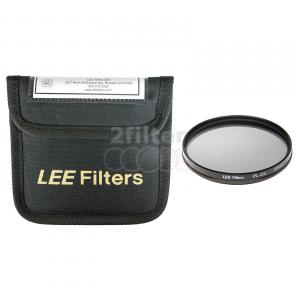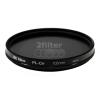
|
Details
LEE Filters 105mm Circular Polarizer
This polarizer is attached to the filter system by a special ring (105mm Front Accessory Ring, not included), which attaches to the front of the filter holder. This allows the polarizer to be rotated independently of any other filters in the holder. It is the ideal solution for landscape photography, where a combination of graduated filters and polarizer may be required.
The polarizing filter is a must have tool in the photographer’s camera bag. It removes reflections from non-metallic surfaces such as glass and water, and it increases color saturation and deepens blue skies, making white clouds stand out in sharp relief. Normally, light waves vibrate in all places at right angles to the direction of its travel. Polarized light, however, vibrates in only one plane. A polarizing filter, therefore, allows through only those waves which vibrate in the plane parallel to the lines in the filter. By rotating the filter, certain waves pass through it, while others bounce off. It is this process of cutting out certain waves of light from reflected surfaces that makes colors appear more saturated. In addition, because much of the light in the sky on a clear, sunny day is polarized, the polarizing filter removes these waves, hence the appearance of a deeper, stronger blue in the final image. One of the main functions of the polarizer is to cut polarized light from blue skies. This results in an increase in contrast between the sky and any white clouds in the scene. The effect is at its strongest when the filter is used at a 90-degree angle to the sun.
The effect of a polarizing filter on a scene can be assessed in two ways. If using an SLR, simply attach the filter to the front of the lens, look through the viewfinder, and rotate the polarizer until the desired effect is achieved. Alternatively, if using a rangefinder, where its strength cannot be assessed by looking through the lens, hold the filter up to the scene, rotate it until the desired effect is achieved, then place it on the camera’s lens.
Polarizing filters can be used with both digital and film cameras.



